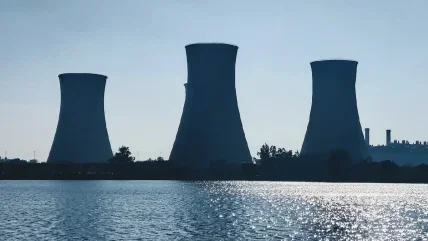
The Government’s launch of Great British Nuclear (GBN) was welcome – if long overdue – progress towards a new dawn for nuclear energy in the UK. In particular, the £50m due to be spent on advanced reactors and over £20m on advanced fuels shows a commendable commitment to thinking beyond just today’s technologies.
However, as is often the case, there seems to be a mismatch between the aspirations and the reality. We’re told that GBN will “drive rapid expansion of nuclear power at an unprecedented scale and pace”. Well, Britain built 11 new nuclear power stations (26 reactors in all) in just 15 years from 1956, all on brand new sites and without the extensive experience and supply chain which we have today. I don’t see a plan from GBN that even comes close to that ambition.
Increasing nuclear capacity
It was Spring 2022 when Boris Johnson, during his tenure as Prime Minister, announced the impending launch of GBN, promising to expand the UK nuclear sector at “warp speed”, prompted by the war in Ukraine and the subsequent clamour for a greater focus on energy independence. However, it was a knee-jerk comment, without any serious planning behind it, which was followed by a long period of inactivity that kept Britain on the back foot. Simon Bowen – initially appointed by the Government to advise on GBN, and now appointed as its Chair – said at the beginning of this year that the Government still didn’t have an overarching strategy and a plan of what should be built where.
We now at least have a clearer vision to follow. But the delays in even getting to this point mean that we’re still playing catch up with other countries that have taken more rapid and decisive steps to increase their nuclear capabilities. Indeed, last year one of the companies which had pinned its hopes on the UK market, Newcleo, announced a move to focus on France instead, blaming the delays and political upheaval in Britain for the switch.
There is also the issue of finding suitable sites to accommodate the proposed plants. A full-scale nuclear reactor can’t just go anywhere – there needs to be a nuclear site licence which will only be granted to a new site if the right conditions on environmental protection, safety, emergency planning, and so on can be met. Some access to cooling water will be needed. There needs to be a connection to the grid to export the power. And the support (or at least acceptance) of the community and their representatives is also important.
The proposed investment in small modular reactors (SMRs) indicates one potential solution to this problem. A key benefit is that they don’t require the same cooling as traditional bigger plants, so there is greater flexibility in terms of locations. However, siting an SMR somewhere will still require buy-in from local communities.
The road to net zero
Of all the possible debates around nuclear energy, the one thing we should all be able to agree on is that it’s a low-carbon form of producing electricity, on par with renewables and many, many times less than gas. It feels as though the government is finally recognising how important nuclear energy is going to be in reaching net zero.
It’s undeniable that nuclear energy leaves a legacy behind for future generations – but it’s certainly not unusual in that respect. Gas, oil and coal generate damaging CO2 emissions, solar panels use some very nasty materials in their manufacture and even wind turbines need massive concrete foundations which (offshore especially) are very hard to remove after they’re no longer needed. There is no perfect solution.
A massive nuclear programme is needed to help hit the UK’s net zero target. We’re quickly approaching 2025 – the mid-point between the millennium and 2050 – and we’ve not yet made much progress in many areas of decarbonisation. Time is very short, so we can’t afford any more of the indecision and feet-dragging that have slowed our nuclear expansion so far.
How much progress we see in the months ahead will give us a strong indication of whether the government really is committed to a green energy transition with nuclear at its heart.
Author: Adrian Bull MBE, Chair in Nuclear Energy and Society at The University of Manchester’s Dalton Nuclear Institute.
This article first appeared in Nuclear Engineering International magazine.






